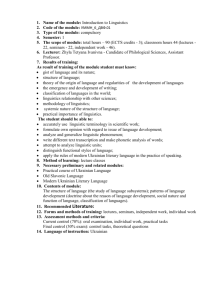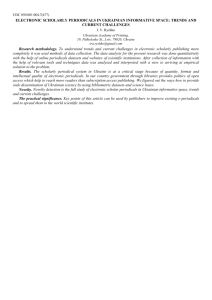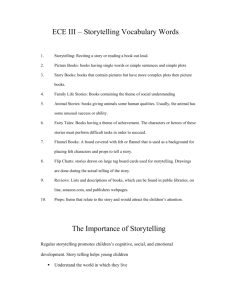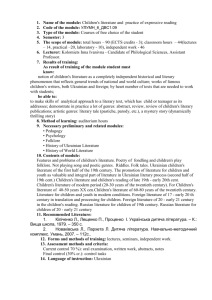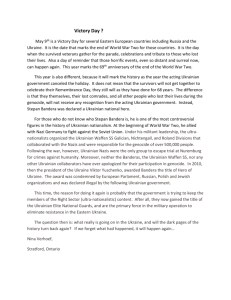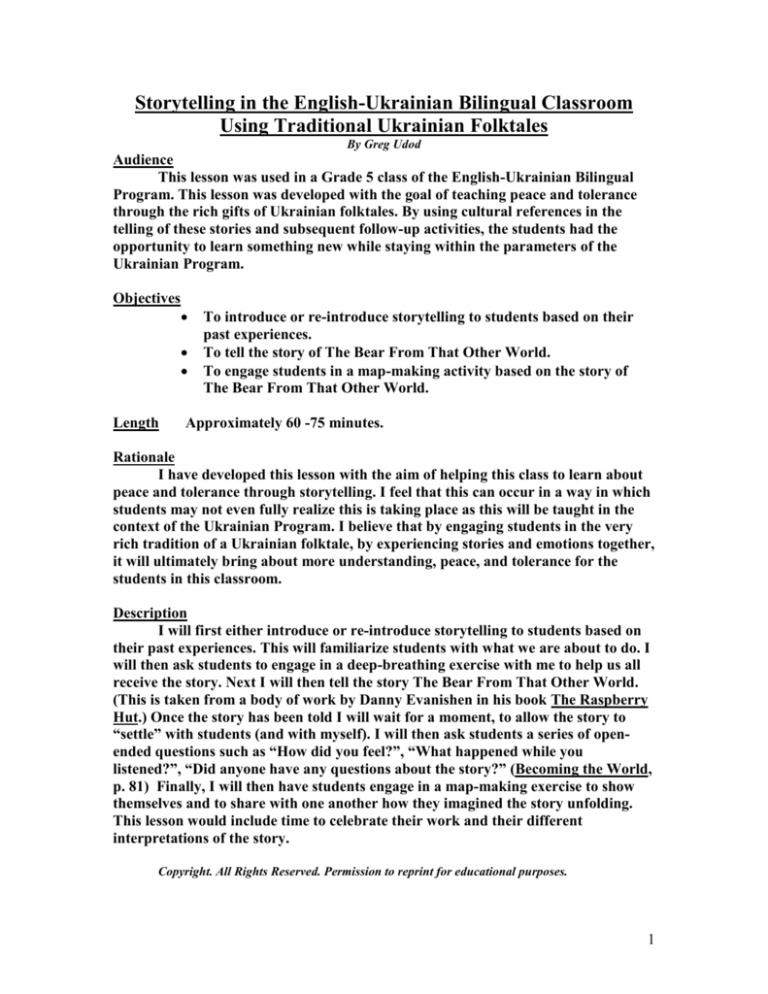
Storytelling in the English-Ukrainian Bilingual Classroom
Using Traditional Ukrainian Folktales
By Greg Udod
Audience
This lesson was used in a Grade 5 class of the English-Ukrainian Bilingual
Program. This lesson was developed with the goal of teaching peace and tolerance
through the rich gifts of Ukrainian folktales. By using cultural references in the
telling of these stories and subsequent follow-up activities, the students had the
opportunity to learn something new while staying within the parameters of the
Ukrainian Program.
Objectives
Length
To introduce or re-introduce storytelling to students based on their
past experiences.
To tell the story of The Bear From That Other World.
To engage students in a map-making activity based on the story of
The Bear From That Other World.
Approximately 60 -75 minutes.
Rationale
I have developed this lesson with the aim of helping this class to learn about
peace and tolerance through storytelling. I feel that this can occur in a way in which
students may not even fully realize this is taking place as this will be taught in the
context of the Ukrainian Program. I believe that by engaging students in the very
rich tradition of a Ukrainian folktale, by experiencing stories and emotions together,
it will ultimately bring about more understanding, peace, and tolerance for the
students in this classroom.
Description
I will first either introduce or re-introduce storytelling to students based on
their past experiences. This will familiarize students with what we are about to do. I
will then ask students to engage in a deep-breathing exercise with me to help us all
receive the story. Next I will then tell the story The Bear From That Other World.
(This is taken from a body of work by Danny Evanishen in his book The Raspberry
Hut.) Once the story has been told I will wait for a moment, to allow the story to
“settle” with students (and with myself). I will then ask students a series of openended questions such as “How did you feel?”, “What happened while you
listened?”, “Did anyone have any questions about the story?” (Becoming the World,
p. 81) Finally, I will then have students engage in a map-making exercise to show
themselves and to share with one another how they imagined the story unfolding.
This lesson would include time to celebrate their work and their different
interpretations of the story.
Copyright. All Rights Reserved. Permission to reprint for educational purposes.
1
Lesson Results and Reflections
The lesson described on the previous page was taught in the Grade 5 class of
the English –Ukrainian Bilingual classroom in October, 2007. Perhaps due to my
enthusiasm for the teaching of this lesson, or the novelty of something new for the
students, or most likely a combination of both, the lesson seemed to go over
extremely well. Below are the results of a post lesson survey I asked the students to
fill in immediately following the lesson.
Upon commencing the lesson I found that the students indeed had a good
general understanding of storytelling thereby eliminating a need for myself to
expand upon what storytelling is all about. The students were quite lively at the
outset of this lesson so the timing of the deep-breathing exercise was perfect. We
engaged in similar deep-breathing and focusing exercises for approximately five
minutes (these were modeled from the summer institute session with Laura Sims).
I found that after this set of exercises the students were more at ease and definitely
more settled and ready to receive the story I was about to tell.
I introduced the story The Bear From That Other World as being a story I
had learnt from a collection of Ukrainian folktales entitled The Raspberry Hut. I
explained that a man from British Columbia by the name of Danny Evanishen had
compiled many Ukrainian folktales into a series of books. I brought a number of the
books with me to class that day so as to show the students their appearance and to
encourage them to explore more of these stories when they next visited our school
library. I then proceeded to tell the story which speaks about three brothers and
their wealthy father. The youngest brother is mistreated by the others but ends up
as the hero of the story mostly through the demonstration of his good character. The
story definitely lends itself to many themes such as compassion, forgiveness, and
perseverance.
When I finished the story and paused, you could hear a pin drop. The
students were completely enamored by the story and this seemed to show me that
these students were hungry for storytelling. The ensuing activity proved to be a little
less successful than the story listening aspect of the lesson. I attribute this to the fact
that the students had been sitting for quite some time and needed to start moving
about. Given the opportunity again I would break up the lesson over two
consecutive days thereby allowing the students the opportunity to remember the
story, execute the activity the next day, and at the same time avoid the restlessness
which occurs after approximately one hour in the classroom on any one given
subject.
Survey Questions and Results
As this was the first time I had completed a lesson with storytelling I wanted
to get a sense from the students as to what their feelings were. Out of 22 students in
the class all surveys came back positive with a strong indication that students
wanted more of this type of teaching. Students also indicated that they felt the
breathing exercises had helped them focus and settle into a listening mode. They
also appreciated the opportunity to map out and share what they had imagined.
2
3


